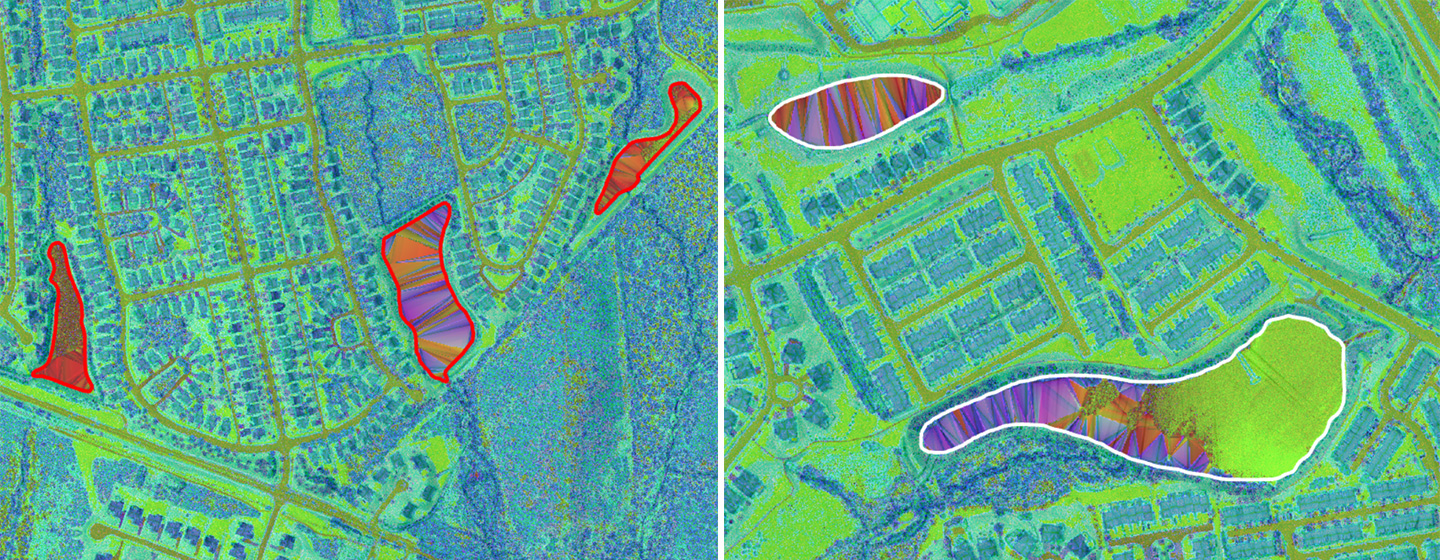We know that each of us learns from our past experiences. We also know that computers follow instructions given to them by humans. So, what if we had a way to teach our past experiences, to a computer to enable us to accomplish far more work within a prescribed amount of time and budget? Better yet, what if technology-driven methods allowed us to spend more of the most valuable aspects of our working time to better support our projects and clients? Specifically, the creative, analytical, and critical design-thinking required to solve the challenging problems that confront our communities and nation each day. Here at Dewberry, we are attempting to do just that by leveraging machine learning (ML) and computer vision in various ways to unlock our staff’s full potential—thereby maximizing our firm’s impact and value.
ML is a type of artificial intelligence that mimics learning. It is the application of algorithms and statistical techniques that enable computers to improve at a task through experience—without being explicitly programmed. In general, ML models are categorized as supervised or unsupervised.
Supervised Learning
Supervised learning is task driven and requires active human participation, potentially from a data scientist. These data scientists provide labeled inputs, constituting training data, paired with desired outputs they wish their algorithm (or model) to learn. For example, a supervised ML model could be trained to predict appropriate categories for various input data. A simple example often encountered in the public safety emergency management disciplines include “swimming pool” or “not swimming pool” to aid in the identification of potential water sources to fight wildland fires.
ML is a type of artificial intelligence that mimics learning. It is the application of algorithms and statistical techniques that enable computers to improve at a task through experience—without being explicitly programmed."
Josh Novac and Colin Flynn
Feature Detection and Extraction
A supervised model can also be used to perform feature detection and extraction. Generating digital elevation models (DEM) from lidar data yields products that often lack detail related to the water surface elevations and thus have a “tinning” appearance on that water. Breaklines are needed to constrain the water surface and “hydro-flatten” the DEM. Creating breaklines requires a time intensive manual effort. Once breaklines are used for hydro-flattening, the resulting DEM is acceptable for cartographic purposes. Collecting water body data is also useful for performing hydrological modeling. Collected water bodies and a collection of associated imagery data products can be used to train a model to identify where water is in the same type of imagery that was shown to it as training data. The example below shows two scenes in a four-band composite image. The left side exhibits previously collected breaklines that were used to train a model. The model’s predictions are depicted with the white boundary on the right.

This exhibits how complex datasets can be used to train models that can then dramatically reduce the time and level of human intervention needed to generate deliverable products for clients. Models that have been trained on a certain type of data can be used for other projects with the same type of data. The concept of transfer learning can also be taken advantage of to help existing models learn from new data to accomplish a related task.
Unsupervised Learning
Conversely, unsupervised learning does not require a data scientist to provide labels and corresponding outputs. Instead, the model sifts through large volumes of unlabeled input data, analyzing meaningful connections or relationships within the datasets themselves. In other words, unsupervised learning can best help to determine if there are groups or previously unknown patterns among data. Using the swimming pools previously identified above, an unsupervised learning model might analyze all the images of pools to detect patterns and possibly group them based on certain characteristics, such as shape or size.
Regardless of the approach taken, the intent is the same: to provide our clients with a robust set of tools and approaches so that their data needs are met in a timely and cost-effective manner. Machine learning is one of the tools that we’re leveraging to do just that.